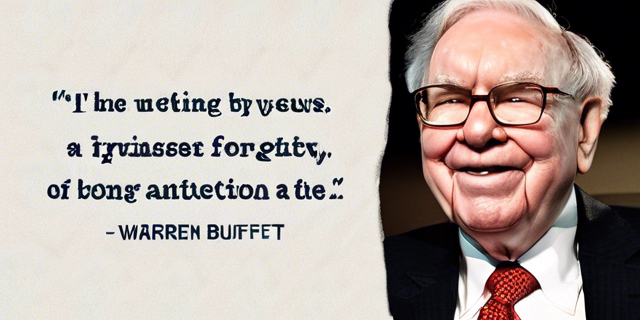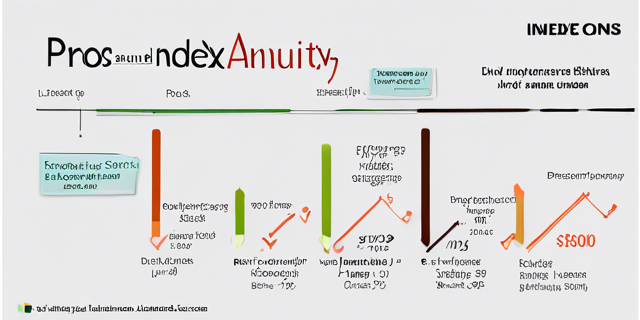Choosing a Robo-Advisor

Investing can be complicated and time-consuming. Robo-advisors aim to simplify wealth management using algorithmic software and automation. But with so many robo-advisors now, how do you select the right one?
This definitive guide examines what robo-advisors provide, top robo-advisors to consider, what factors matter most when choosing one, and answers common questions to equip your decision-making. Let’s dive in!
What is a Robo-Advisor?
A robo-advisor provides automated investment portfolio management online using computer algorithms instead of human wealth managers. They offer affordable account minimums, dividend reinvesting, rebalancing, and tax optimization guiding your money in the background 24/7.
You start by answering questions about your financial situation, goals, and risk tolerance. The robo-advisor then builds and manages a diversified portfolio of low-cost ETFs and funds specifically for you. It’s about bringing smart money management to everyone, not just the ultra-wealthy.
Benefits of Using a Robo-Advisor

Compared to traditional human investment advisors, what unique upsides do robo-advisors offer individual investors?
- Low Account Minimums – Open and start investing with typically $500 or less.
- Lower Management Fees – Algorithms are much cheaper than Wall Street pros!
- Passive Investing Approach – Computer formulas enable hands-off rebalancing and picking.
- Automated Portfolio Management – Ensure discipline without emotional decision pitfalls.
- Easy Account Access – Monitor performance on web/mobile rather than rely on manually generated reports.
- Multiple Account Types – From IRAs to trusts to joint taxable accounts.
- Tax-Loss Harvesting – Selling losers to offset gains and lower your tax bill.
The combo of affordability, automation, diversification, and tax savviness packs a powerful punch.
Top 6 Robo-Advisors to Consider
Many strong robo-advisor platforms now exist with varying strengths. Which top firms lead the pack delivering premium algorithmic investing technology and service?
Betterment
The largest independent robo-advisor, Betterment pioneered auto-balancing and remains an industry leader.
- 0.25% annual fee
- No minimum balance
- Broad account type options
- Best for hands-off investors
Wealthfront
Offers automated perks like tax-loss harvesting and portfolio lines of credit.
- 0.25% annual fee
- $500 account minimum
- Integrated banking/borrowing
- Best for tech savviness
Ellevest
Focuses portfolio decisions specifically for women’s longer lifespans.
- 0.25% annual fee
- No minimum balance
- Impact/ESG investments
- Best for women investors
M1 Finance
Allows completely customizable portfolio investment pie of stocks/ETFs.
- 0% management fee
- $100 minimum balance
- Unique DIY aspect
- Best for stock picking
Axos Invest
Division of Axos Bank provides FDIC insured cash balances.
- 0.25% annual fee
- $1,000 minimum deposit
- High yield savings
- Best for cash management integration
SigFig
Veteran portfolio manager Brian Watson heads advisory services.
- 0.25% annual fee
- $2,000 minimum deposit
- Sophisticated portfolio guidance options
- Best for large portfolios
This list covers starter firms up through advisors suited for accounts up to $1 million. Evaluate their strengths against your personal needs.
Core Criteria for Choosing a Robo-Advisor

Specific robo-advisor offering differences aside, several universal factors should drive your selection decision:
Account Minimums – Choose based on how much you have saved to invest currently.
Management Fees – Percent of assets charged annually as the cost for automated services.
Human Support – Option for phone, chat, or even financial advisor guidance beyond just algorithms.
Account Types – Availability of individual taxable, joint, IRAs, trusts, 401k rollovers, etc to suit your funds.
Customization – Tweak portfolio beyond pre-defined allocation models to personalize further.
Tax-Loss Harvesting – Built-in selling trades at a loss to offset capital gains and lower your tax burden.
Performance & Returns – Compare historical yearly percentage returns between robo-advisor options.
Safety & Security – Underlying bank/brokerage accounts with FDIC pass-through insurance and anti-fraud protections.
Rate all contenders across these vital categories until the right robo-advisor match emerges for your situation.
Robo-Advisors vs Human Financial Advisors
Robo-advisors appeal by replacing expensive human capital with algorithms and automation, but how exactly do they compare and contrast for investors?
Pricing – Robos charge ~0.25% vs traditional 1% of AUM advisor fees.
Minimums – Robos are ~$500 minimum compared to $100k – $500k for full-service advisors.
Services – Robos focus just on portfolio management whereas financial advisors provide comprehensive financial planning.
Management Style – Robos use passive investing in index funds/ETFs while advisors often pick individual stocks/bonds/options & trade more actively based on research.
Account Access – Robos enable 24/7 mobile app dashboard access versus advisor meetings for manual reporting.
In summary, robo-advisors bring effective investing to the masses affordably but advise just on allocated portfolios without fuller planning.
Who Are Robo-Advisors Best Suited For?
Given the difference in services and costs, what types of investors benefit most from a robo-advisor over a human wealth management professional?
Newer Investors – Getting started guide and answers to basic questions.
Smaller Portfolios – $100k or less with lower minimums.
Passive Investors – Seeking hands-off management.
Auto-Rebalancers – Forced discipline removes self-sabotaging temptation to emotionally trade.
Index Investors – Computer models properly diversify across entire markets efficiently.
Low-Cost Shoppers – Fraction of typical 1% advisor asset fee unlocks savings.
For these investor personalities, robo technology checks all the boxes!
Questions to Ask When Choosing a Robo-Advisor
Still feeling unsure exactly how to approach picking the perfect robo-advisor out of the myriad of options? These key questions will lead your decision-making:
What is your minimum investment required to open an account?
What is your annual management/account fee structure?
Which account types (IRA, personal, trust, etc) do you provide?
What customization ability exists across the portfolio models?
Can I speak with a human advisor if needed?
How does your automated tax-loss harvesting work?
What impact/socially responsible investment options exist?
Where do you hold my cash balances? Are they FDIC insured?
Can you describe your security, encryption, and fraud prevention measures?
What mobile app and dashboard capabilities help track my portfolio?
Get clear answers covering fees, features, customization flexibility, safety, and performance monitoring from multiple robo-advisor firms before deciding.
Getting Started with a Robo-Advisor in 5 Steps
Ready to leverage algorithmic investment management? Here is the gameplan to open and begin using your new automated money manager:
Step 1) Compare Robo-Advisors
- Use this guide and rate options across your needs.
Step 2) Open Your Account
- Fund your account with initial deposit based on robo-advisor minimums.
Step 3) Set Up Your Portfolio
- Complete risk assessment questions to build custom portfolio allocation.
Step 4) Enable Optional Settings
- Establish auto-deposits, tax loss harvesting preferences, access permissions, etc.
Step 5) Monitor Your Investments
- Review performance daily/weekly against benchmarks through the dashboard.
Enjoy sleeping easier knowing your diversified, automatically balanced portfolio works hard for you behind the scenes!
The Future of Robo-Advisors
Where is robo-advisor technology heading in the years ahead? We can expect to see:
- Declining management fees edging closer to zero as algorithms get cheaper. More profits from bank deposit balances.
- Increased hybrid pairing with human advisors – the best of both worlds!
- Advanced analytics like data mining and predictive modeling driving portfolio decisions.
- Custom portfolios becoming more customizable with added flexibility setting exclusions, weightings, etc.
- Continued improvements in user experience on mobile apps, data visualizations, and real-time notifications.
- Ongoing consolidation amongst robo-advisor pure-plays gets acquired by banks/brokerages.
Robo-advisor capabilities will only strengthen – increasing sophistication and affordability for investors.
The Takeaway
Robo-advisors simplify hands-off investing with automated, diversified, algorithmic portfolio management. Top robo platforms like Betterment, Wealthfront, and Ellevest make smart rebalancing and tax optimization easy and affordable for everyone.
Choosing comes down to pricing, account types/minimums, loss harvesting perks, customization capability, human support, and historical performance aligned to your needs.
Empower your money to work harder using robo-advisor technology tuned precisely to your risk appetite and wealth-building priorities!
FAQs
What assets can a robo-advisor invest my money in?
Robo-advisors predominantly utilize low-cost index-based exchange traded funds (ETFs) and mutual funds covering U.S. stocks, international stocks, and bonds customized to your selected portfolio model.
How often do robo-advisors rebalance my portfolio?
Rebalancing frequency varies slightly across firms but typically occurs on a quarterly basis. This automatially Readjusts drifting asset class allocations back to your original target model.
Can I have multiple robo-advisor accounts?
Yes, absolutely! You can open as many individual taxable, joint, IRA, trust-based accounts across any firms providing robo-advisor services as meet your needs. Consolidate viewing all accounts in one dashboard.
What robo-advisor returns can I expect?
Return rates align closely to the broader stock market thanks to the passive indexing approach. Expect roughly 7-10% average annual returns for a diversified portfolio over decades. Bad market years see losses offset by gains in good years.
How often should I check my robo-advisor account?
Thanks to automation managing day-to-day investment decisions and trading, only occasional check-ins are needed. Review portfolio performance, allocations, and loss-harvesting activity monthly or quarterly. Set app notifications so you never miss important account alerts!









